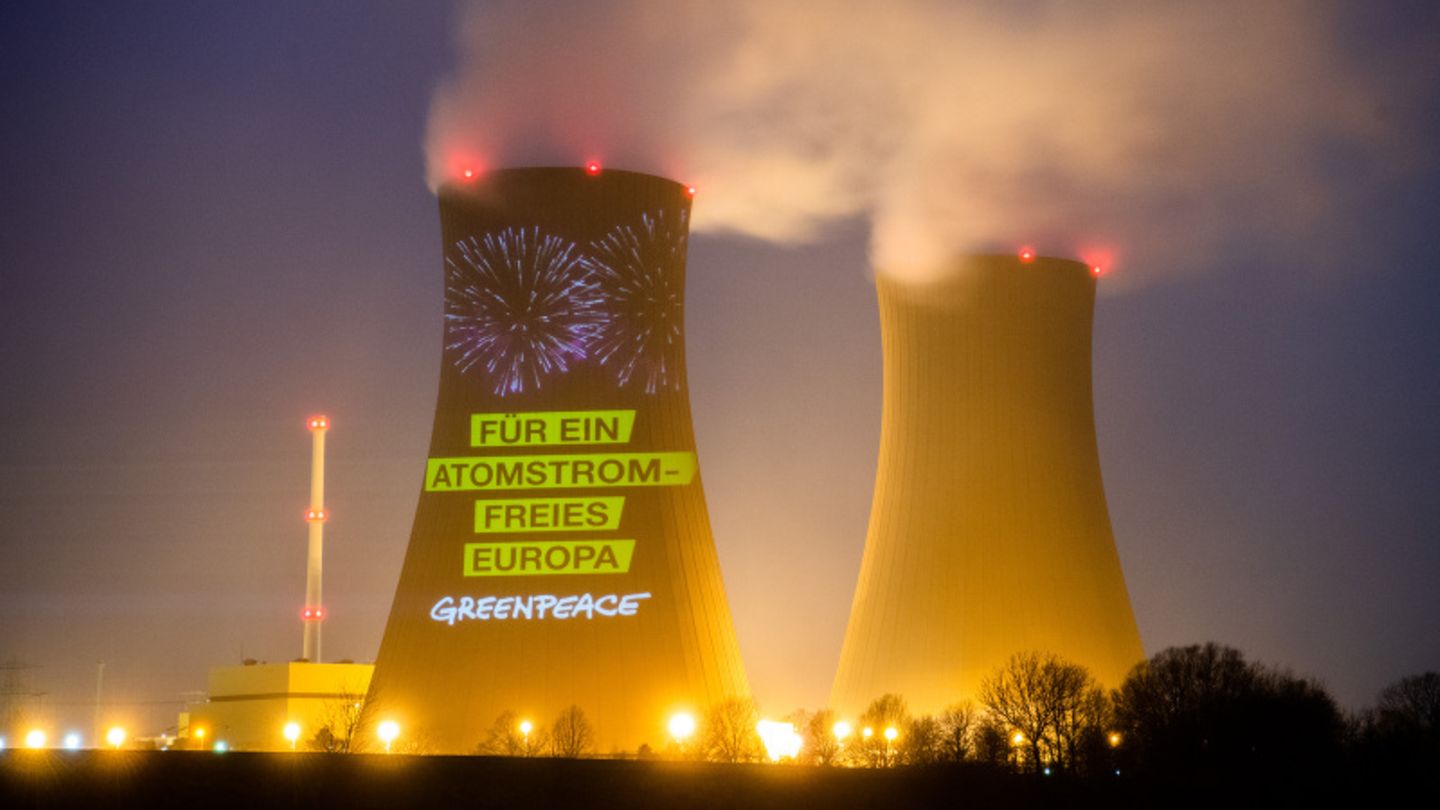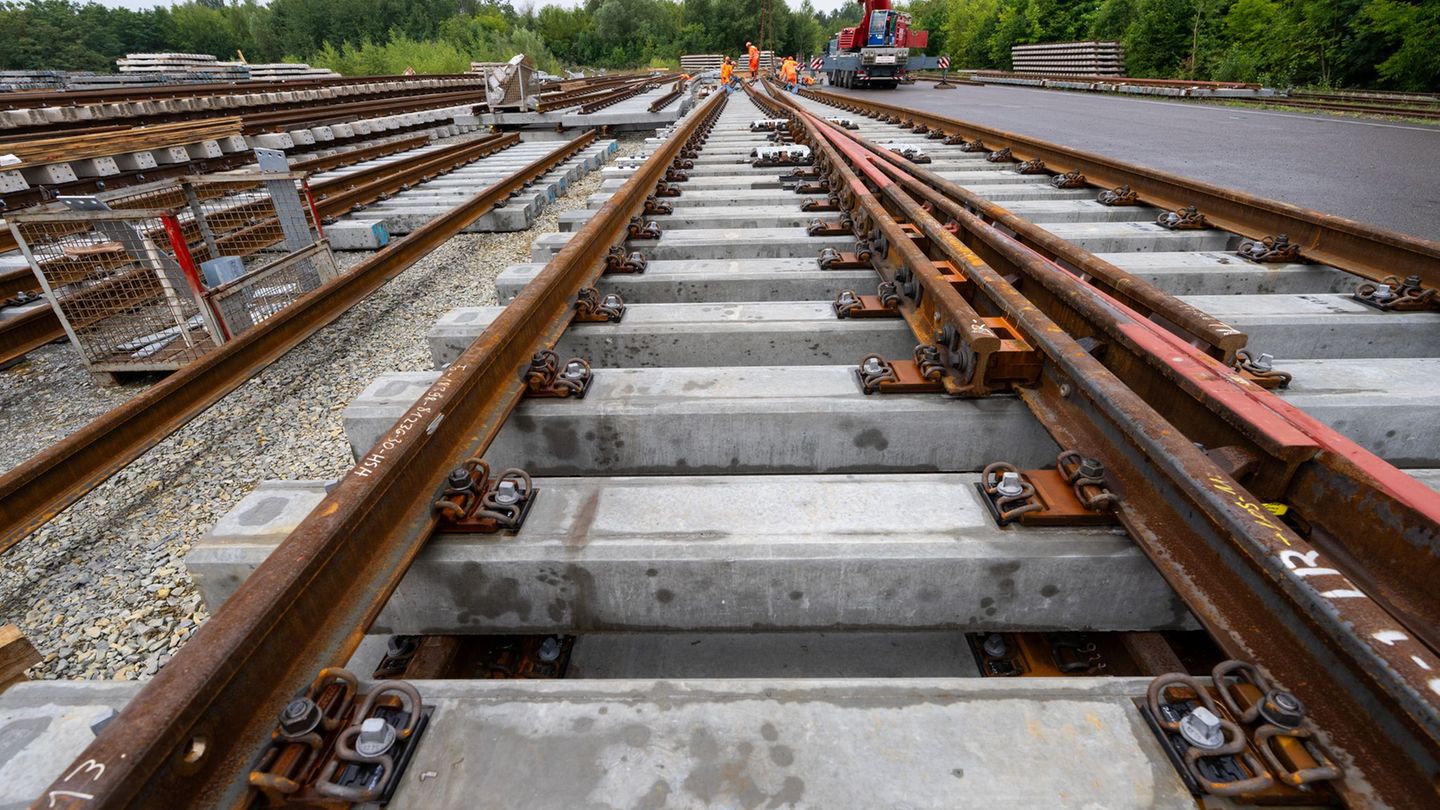In the fight against nuclear power, Germany is currently pretty much alone in Europe: the EU Commission wants to give it a green label, other EU countries are already building new nuclear power plants.
For many environmentalists, the new year started with good news. Over New Year’s Eve, the number of active nuclear power plants (AKWs) halved from six to three. As planned, the reactors in Brokdorf (Schleswig-Holstein), Grohnde (Lower Saxony) and Gundremmingen (Bavaria) went offline. Germany wants to finally cancel nuclear power by the end of the year – a good decade after the reactor accident in Fukushima, Japan.
But the joy did not last long. While opponents of nuclear power were still celebrating the victory they had fought for over many years, the EU member states received an email from Brussels. In it, the EU Commission proposes, within the framework of the so-called taxonomy, to classify nuclear power as well as gas as green technologies under certain conditions. The climate-friendly label is intended to motivate investors to invest in more sustainable technologies and companies and thus to contribute to Europe’s climate neutrality by 2050.
However, the move by the EU Commission is highly controversial. Climate activists fear that the expansion of renewable energies will suffer if investments in nuclear and gas-fired power plants are also considered sustainable. The federal government welcomed the decision to use gas as a bridging technology, but sharply criticized the nuclear power proposal. Economic and climate protection minister Robert Habeck (Greens) spoke of “greenwashing”, his party colleague and environment minister Steffi Lemke described the plans as “absolutely wrong”.
Germany’s special way
A return to nuclear power is out of the question for the new traffic light coalition – above all because of the considerable risks involved in final disposal. When the last German nuclear power plant goes offline at the end of 2022, the accumulated nuclear waste will continue to radiate for decades. Experts expect around 10,500 tons of highly radioactive waste from fuel elements by 2080. The search for a safe repository has been ongoing so far.
In addition, every euro that goes towards nuclear energy is missing from the expansion of renewable energies. According to Germany, “ideally” wants to phase out lignite by 2030 and obtain 80 percent of its electricity from renewable energies instead. Last year, however, their share of electricity generation fell to just under 41 percent. According to the BDEW energy association, lignite and hard coal still cover more than a quarter of Germany’s electricity needs, and nuclear power almost 12 percent.
Every time a nuclear power plant is shut down, the question arises as to how Germany intends to meet its increasing electricity needs in the future. For the new Minister for Economic Affairs and Climate Protection, the solution lies primarily in promoting wind power – in future three times as many wind turbines are to be built per year instead of the previous 450.
Europe divided on nuclear power
But while Germany is finally turning its back on nuclear power, most European countries want to stick to nuclear energy in order to achieve the climate targets – and in some cases even have new nuclear power plants built. It is argued that there are hardly any CO2 emissions during operation, that the power plants require little space and reliably produce electricity regardless of wind or sun. An overview.
France has long been considered the “atomic country” of Europe. It ranks third behind the USA and China among the world’s largest producers of nuclear power. Its 56 reactors cover around 70 percent of national electricity consumption and around 40 percent of total energy demand, as much as crude oil and natural gas combined. In view of the ongoing energy price crisis, President Emmanuel Macron has already announced the construction of new reactors and also wants to promote novel, modular mini-reactors.
In the Netherlands Due to the considerable oil and gas reserves in the North Sea, nuclear power has so far only played a subordinate role. Their share in the energy mix is only three percent. But in its coalition agreement, the new government decided to let the almost 50-year-old Borssele nuclear power plant run longer and to build two new nuclear power plants.
In Scandinavia Finland and Sweden rely on nuclear energy. Finland wants to further expand the share of nuclear power in the electricity supply, which is just under 28 percent. Another reactor in the Olkiluoto nuclear power plant is scheduled to go online next year, and the construction of a new nuclear power plant is also planned by 2028. Finland is also the first country in the world to work on building its own repository for nuclear waste. In Sweden, the main source of energy is still hydropower. Around 30 percent of electricity generation is currently generated by the three nuclear power plants in Ringhals, Forsmark and Oskarshamn. Some of these are to remain on the grid until 2040.
In Eastern Europe the use of nuclear power is widespread and socially accepted. With almost 50 percent of electricity consumption, Hungary has the highest share of nuclear energy. Most of the piles are in the Ukraine (15), followed by the Czech Republic (six), four each in Hungary and Slovakia, and two each in Bulgaria and Romania. Slovenia and Croatia share a nuclear power plant, Belarus put its first into operation in the summer.
Actually wanted to Belgium be out of nuclear energy by 2025. But the current government made this conditional upon assuming office that supply and affordable electricity prices were secured. After all, Belgium has so far obtained 40 percent of its electricity from nuclear power plants. The final decision should now be made by spring 2022.
Also Italy is an old anti-nuclear country. In 1990 the only reactor worth mentioning was shut down; today the country receives only five percent of its electricity from neighboring France. But the debate is getting a new impetus from the Italian Environment Minister Roberto Cingolani, who is campaigning for an openness to nuclear energy. The right-wing populist Lega party is also in favor of promoting the nuclear industry.
Worldwide: China leads the way in nuclear power
This is arguably the most dynamic time for the nuclear sector since the 1950s and 60s, said William Magwood, Director General of the Organization for Economic Cooperation and Development (OECD-NEA) nuclear agency in the “”: “We have been able to do so in recent years Find widespread interest in nuclear technologies in pretty much every part of the world. “
There is particularly great interest in China, where nuclear power is currently experiencing a huge comeback. After the reactor accident in Fukushima, Japan, the government in Beijing initially imposed a freeze on construction of nuclear power plants. But since the country pledged at the Paris climate summit to be carbon neutral by 2060, nuclear power has been back on the agenda. The Chinese government plans to build at least 150 new reactors over the next 15 years. This means that the country should replace the USA as the largest producer of nuclear energy in a few years. Russia and India are also planning to commission new reactors.
Where the nuclear path for the European Union and thus also for Germany leads, could be revealed on January 12th. Until then, the member states have time to comment on the EU Commission’s plans. Their implementation could only be prevented by a majority of at least 65 percent in the EU Parliament. However, this is considered unlikely: besides Germany, only Austria, Luxembourg, Denmark and Portugal have so far spoken out against a green label for nuclear power.
Sources: “”, “”, “”,, with DPA material
Source From: Stern
David William is a talented author who has made a name for himself in the world of writing. He is a professional author who writes on a wide range of topics, from general interest to opinion news. David is currently working as a writer at 24 hours worlds where he brings his unique perspective and in-depth research to his articles, making them both informative and engaging.




